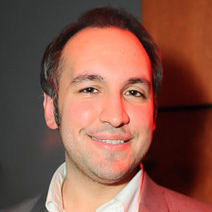Houston's Third Ward Neighborhood Poised for Major Changes
Located in southeast Houston, the Third Ward is one of six historic districts in the city and among its most well known. The history of the ward dates back to the earliest days of the city’s foundation in 1836, when its boundaries encompassed parts of what are currently Downtown and Midtown Houston. However, though the ward’s boundaries changed over time, it has consistently been known as a culturally rich area of the city. During its earliest days, the area was characterized by Victorian-era homes and was where the city’s elite lived.
Times changed and so did the Third Ward. Slowly, it opened up to a wider range of people and became a more affordable place to live. It also continued to make a name for itself as one of the most politically and culturally active areas of the city. Civil rights groups were launched from Dowling Street, including the Rainbow Coalition, which brought people from various ethnic backgrounds together.

The Third Ward is also the home of Emancipation Park, the oldest park in the city. Also located along Dowling Street, Emancipation Park was founded in 1872 to commemorate the end of slavery in the United States. It was privately operated until it was gifted to the city as a donation, after which it was converted into a municipal park that could operate throughout the year. The SugarHill Recording Studios also originates in the Third Ward. At its peak, it helped launch the careers of some of America’s most famed musicians, including The Big Bopper and Freddy Fender. It celebrated its 75th year of operation in 2017 and continues to function as the longest continuously operating studio in the country.
The history of the Third Ward, however, was not always one of political activism and culturally enriching activities. Shifting demographics and losses to the local economy temporarily hurt the area. This was accompanied by a decline in housing conditions.
However, despite this downturn, the Third Ward has recently emerged as a go-to destination in the city of Houston. While retaining the same landmarks that gave it such a rich history, including SugarHill Recording Studios, the area has also experienced revitalization and growth over the past few decades. Texas Southern University has long made the area its home, and the nearby University of Houston was recognized in 2013 as a Carnegie Tier I Research Institute.
Tens of millions of dollars were invested into the makeover of Emancipation Park, which was rededicated in 2017 along with its new recreation center. Meanwhile, the Third Ward Urban Redevelopment Plan took unused properties and put them to productive use.
Throughout this revitalization process, locals and developers alike seem committed to retaining many of the historically significant elements of the Third Ward that have always made the area unique. In addition, projects like the Complete Communities initiative have been focused on the ward to ensure that high-quality, affordable housing is available. These efforts have been planned to ensure the ward retains its cultural authenticity and longtime residents while also welcoming the wave of new residents moving into the area. This has also been accompanied by the establishment of economic corridors designed to entice ever more business to the historically significant and well-travelled Dowling Street, which has long attracted business owners.

Of course, this renewed interest in the area has been accompanied by a stream of residents and residential developments in the area. As early as 2006, the Houston Chronicle reported that property values were beginning to rise at a pace the area had not seen in years. Recently, the Chronicle issued the latest in its coverage of the area and noted that many of the local homes that had fallen into disrepair had been replaced with newer residential developments. Meanwhile, local efforts by community organizations preserved some of the neighborhood’s historic structures. The new developments around the Third Ward have also led to an upward trend in housing prices and projections that home value will increase. As noted by Culture Map, home value is anticipated to rise by 6.8 percent in 2018, which again points to the impact revtilization efforts are having on the area. Much of the construction has been of standalone houses along some of the neighborhood’s most popular corridors, though townhouse projects, like the La Ville St. Emanuel, are also bringing a modern touch to the historic Third Ward.
Still, community members have done their best to guarantee the Third Ward remains a home to its longtime residents. The emphasis on creating housing for everyone can be seen in the wide range of prices on homes, with older properties selling for as little as $100,000 and more recently developed properties going for closer to $500,000. It has become a particularly attractive destination for residents hoping to live near Downtown Houston who still want to find affordable housing slightly away from the center of town. The ward has also remained popular due to its proximity to both the Museum District and Texas Medical Center. Given its historically significant nature and the numerous amenities surrounding it, the development of the Third Ward looks to continue into the future.

